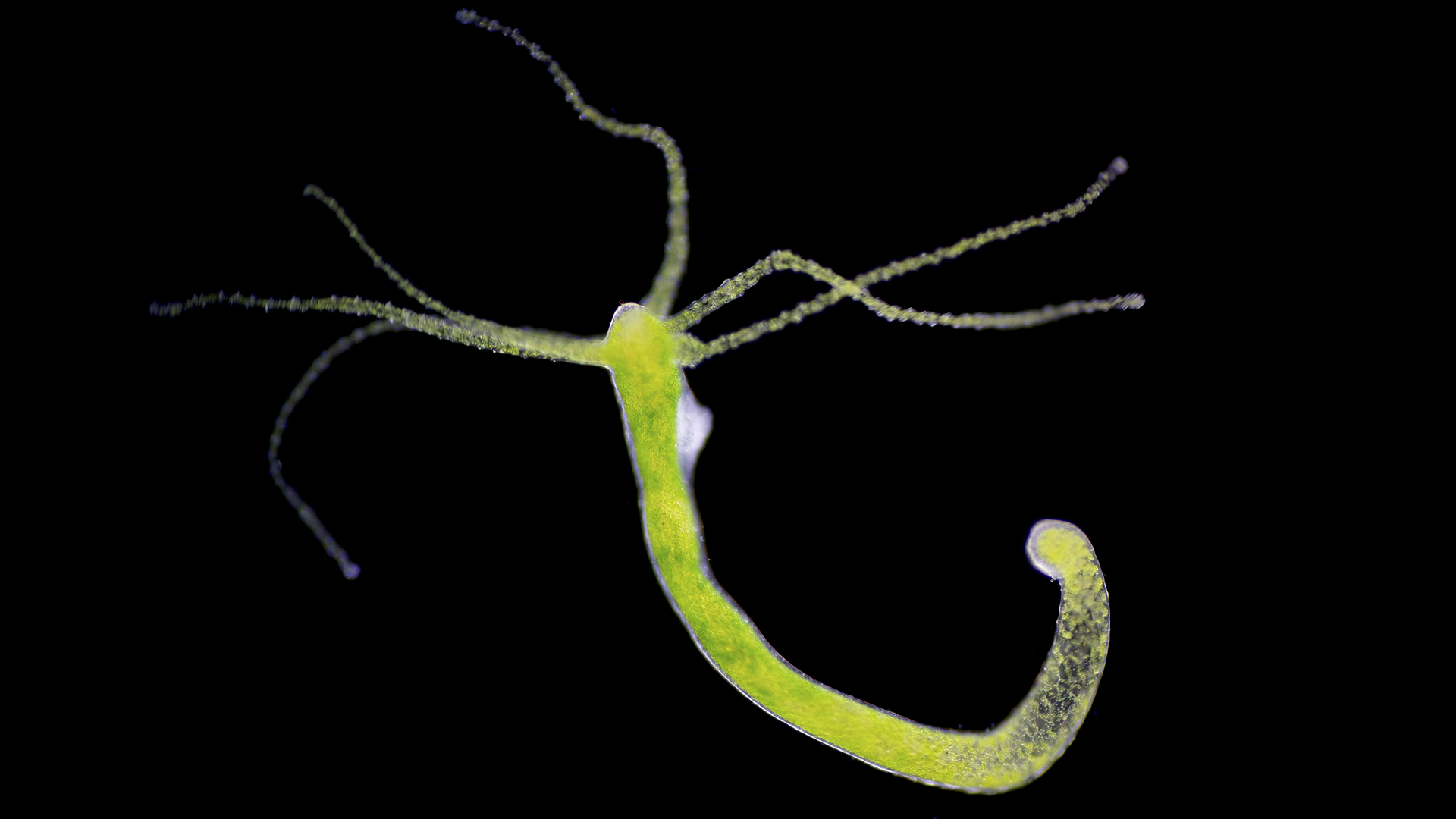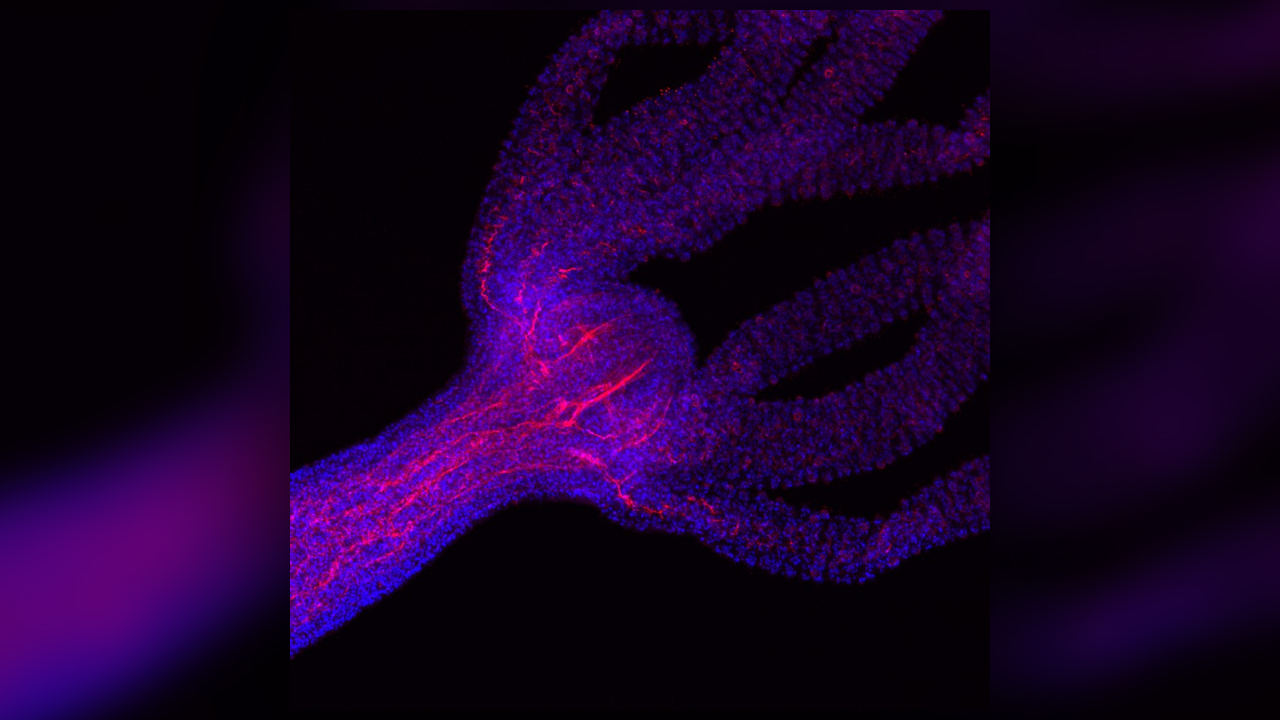Here's the secret to how 'immortal' hydras regrow severed heads
For hydras, there's more than one way to get a head.

Tiny aquatic animals called hydras can regrow lost heads, and scientists now have a clearer idea of how these freshwater invertebrates do it.
A hydra's body is fairly simple: It's a tubelike cylinder tipped with a grasping footlike appendage at one end and a tentacle-ringed mouth at the other. But hydras possess the remarkable ability to regrow bits of their bodies that have been amputated; under the right circumstances, an entirely new animal can grow from a detached chunk of tissue.
In lab experiments, hydras have demonstrated that they can renew their own cells indefinitely, which means that these animals are biologically immortal. But while prior research has identified some aspects of hydra regeneration, researchers have been searching for answers about how the hydra genome directs its cells to grow a brand-new head.
Now, scientists have not only mapped hydras' instructions for head-growing; they've also shown that gene activity during the growth of a replacement head diverges from the genetic instructions that shape head growth in a new hydra when it buds — or emerges directly from a parent's body during asexual reproduction.
Related: The longest-living animals on Earth
Though the result is the same — a new hydra head — gene expression varies much more during regeneration than it does when a hydra is budding and growing its first-ever head, the researchers discovered.
The Hydra genus is part of Cnidaria, the same phylum as jellyfish, sea anemones and corals, and there are 20 to 30 Hydra species. All cnidarians are tentacled, aquatic invertebrates with bodies that are symmetrical along a central axis. Hydras measure up to 0.8 inches (20 millimeters) long, with 10 to 12 tentacles surrounding their heads, according to "Ecology and Classification of North American Freshwater Invertebrates" (Academic Press, 2010).
Get the world’s most fascinating discoveries delivered straight to your inbox.
Scientists have known that hydras can regenerate since they discovered the wee animals nearly 280 years ago, said study co-author Aide Macias-Muñoz, a postdoctoral researcher in the Department of Ecology, Evolution and Marine Biology at the University of California, Santa Barbara (Macias-Muñoz conducted the research while at UC Irvine's Mortazavi Lab, in the Department of Developmental and Cell Biology). Prior research also showed that multiple genes in a pathway called "Wnt" controlled hydras' head growth, and that a group of so-called head organizer cells near the top of the body sent signals to cells near the head stump in a decapitated hydra, directing the formation of specialized tissues for a new head.
For the new study, the researchers first identified more than 27,000 genetic factors that play a role in hydra regeneration, then mapped smaller subsets of several thousand elements to find the on/off switches in the hydra genome that were active only when the hydras were regrowing new heads.
As the study authors created these maps, they noticed that not all heads are created equal. When a hydra budded, it took about 72 hours to grow a head, while regenerating a replacement head took about 48 hours. The researchers also identified 298 differences in gene expression between the two processes.
"During budding, genes (including those involved in the head organizer) seem to be slowly and constantly increasing over time," Macias-Muñoz told Live Science in an email. "During regeneration, on the other hand, genes have more dynamic expressions, some quickly increasing and then decreasing, and having expression peak at different time points in regeneration."
This is the first evidence of variations in the genetic instructions for head growth in hydras, suggesting that the animals could have entirely different sets of head-growing blueprints — possibly incorporating hundreds of genes — for regeneration, development and budding, Macias-Muñoz said in the email.
"That would mean there are three different ways to make a head, depending on the circumstances," Macias-Muñoz said.
The findings were published Dec. 8 in the journal Genome Biology and Evolution.
Originally published on Live Science.

Mindy Weisberger is a science journalist and author of "Rise of the Zombie Bugs: The Surprising Science of Parasitic Mind-Control" (Hopkins Press). She formerly edited for Scholastic and was a channel editor and senior writer for Live Science. She has reported on general science, covering climate change, paleontology, biology and space. Mindy studied film at Columbia University; prior to LS, she produced, wrote and directed media for the American Museum of Natural History in NYC. Her videos about dinosaurs, astrophysics, biodiversity and evolution appear in museums and science centers worldwide, earning awards such as the CINE Golden Eagle and the Communicator Award of Excellence. Her writing has also appeared in Scientific American, The Washington Post, How It Works Magazine and CNN.



